
 |
|
#1
|
|||
|
|||
|
Saddle up for this post, it's gonna be a long one.
As a background, I've built guitars and done repairs before but almost exclusively on electrics. Nothing more complex than a new saddle and nut for an acoustic. Now a project has fallen into my lap where I think I have the necessary skill to complete it but it will take a lot of work and I will need some advice. My girlfriend and I both play guitar and she sings, it's one of the ways we bond. During a visiting to her father's house she showed me her grandmother's old guitar and asked if I could possibly fix it. The guitar developed a crack sometime in the 70's or 80's and the repairman they took it to told them it couldn't be fixed. The guitar sat in it's case until my girlfriend decided to turn it into an art project as a way of honoring her grandmother when she was in her teens. Some pictures:  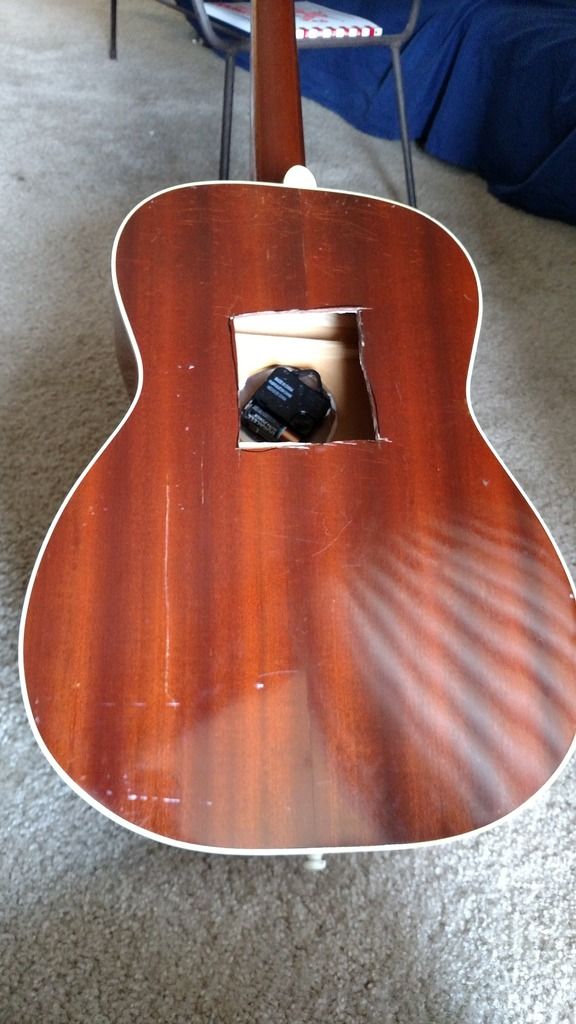 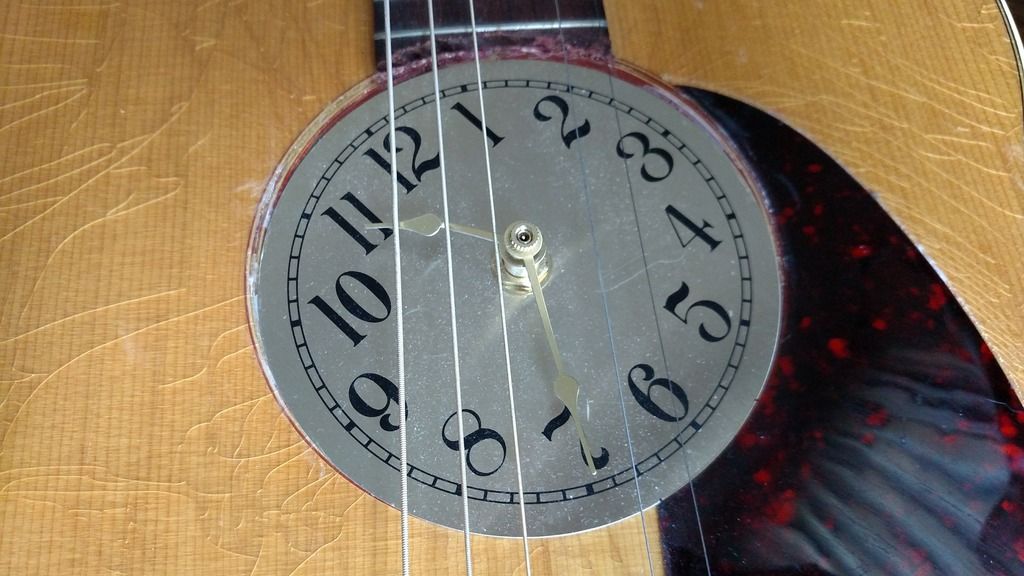  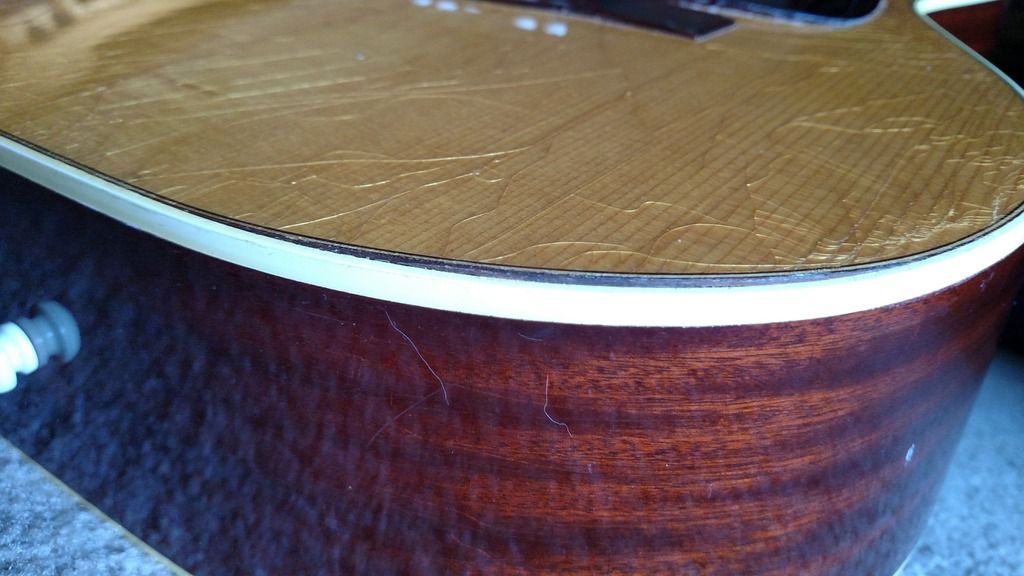  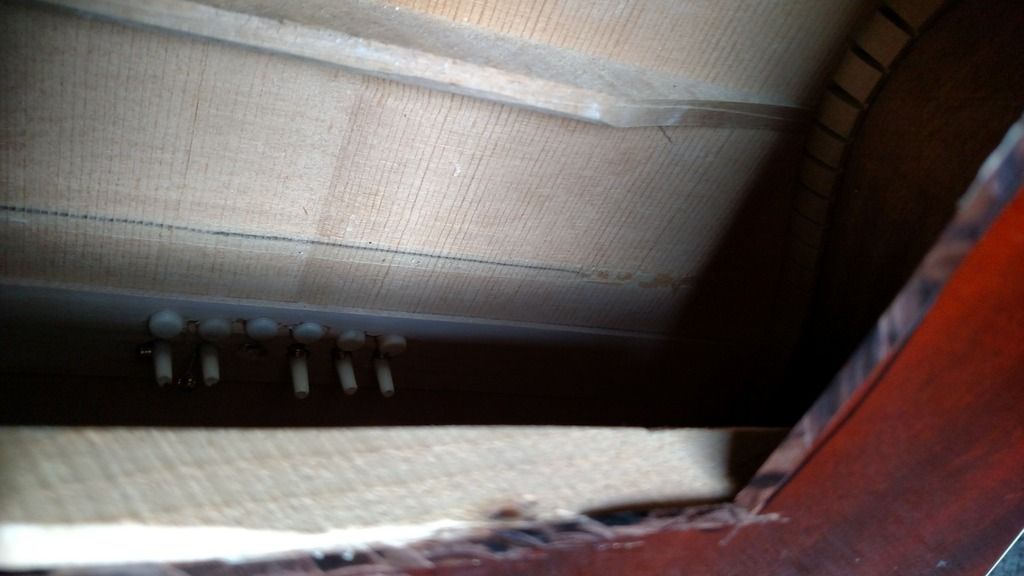 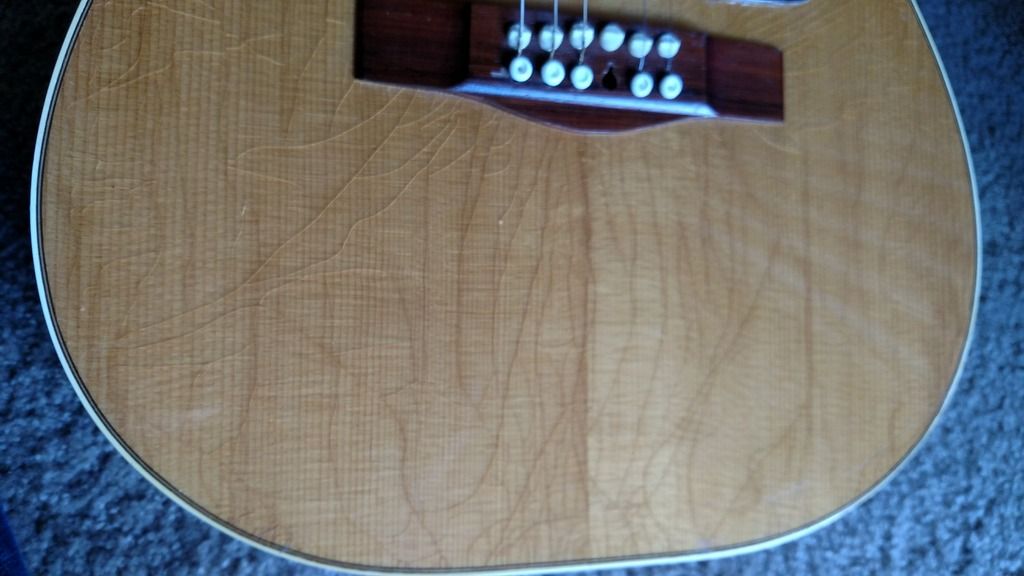 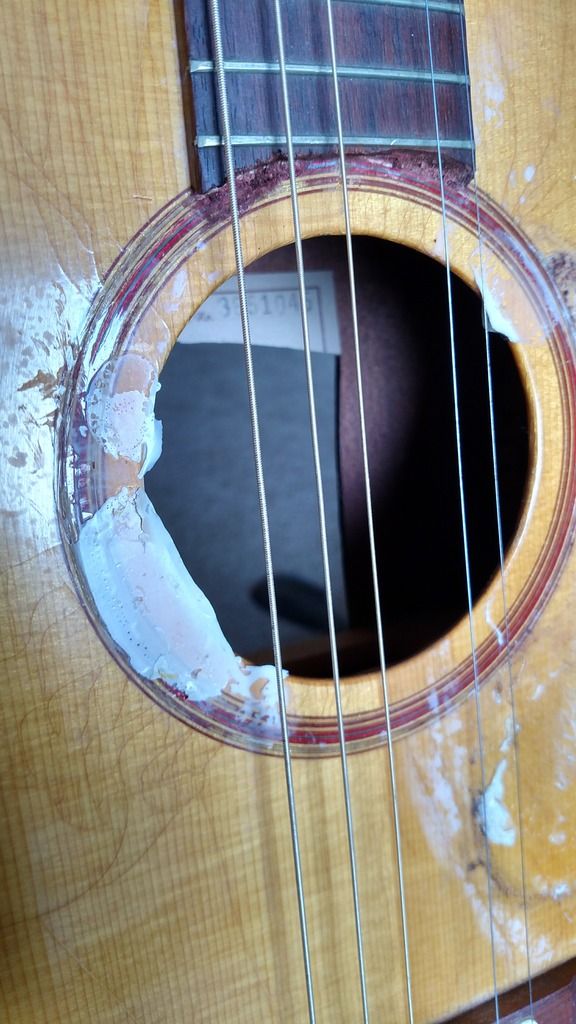 When she described this instrument I wasn't expecting quite this and am a little in over my head. Though I want to attempt to repair it, even with all its flaws it still sounds wonderful and if I can't repair the guitar it can still be used as an art project. The crack in the back is evident in the second photo and whoever they took the guitar to must have been incompetent because that could've been repaired. From the images, it is plain to see the guitar has many issues. There's the GIANT GAPING HOLE IN THE BACK!!!!!!!, fingerboard damage, soundboard lifting, missing brace, rosette damage, and pickguard. The guitar in question is a Goya T-14 and must've been a B stock as the guitar already had the fingerboard damage when they bought it and no brace came out of the guitar when my girlfriend cut the hole in the back. Not pictured is the area where the soundboard is lifting from inside the instrument. The guitar must've been dropped at one point, inside the guitar some of the purfling is broken where the soundboard is lifting and there is more than usual checking there, the drop might've also been what caused the crack in the back. Here my plan so far and how to accomplish it: Fingerboard - Steam off the fingerboard, splice new rosewood onto the end to make it 22 frets, add position markers all the way up the neck, plane down the sides of the fingerboard and install binding to hide the spliced wood, plane the face of the board for a flatter radius, finally refret with EVO fretwire. Soundboard - Remove the old back, clamp and glue the broken purfling and lifting portion of the soundboard. Brace - Make a new brace from spruce and glue it in on the pencil line where one is missing. (Is spruce the best wood to use?) Rosette - Remove the old rosette, make a new one, glue the new one in. (How do I remove a rosette?) Pickguard - Remove the old glue from the back of the pickguard, reglue it as one of the final steps. (Is there a solvent for dissolving glue?) Tuning keys - Replace old tuning machines with new Schaller GrandTune open gear tuners. Bridge - Make new bridge with standard saddle, purchase new bridge pins, replace brace on the inside to get rid of the holes from the adjustable saddles (no repair will be performed on the soundboard unless it would benefit). (How do I calculate where the new saddle needs to be? Would fitting new pieces of spruce into the the holes in the soundboard be beneficial?) Back - Remove the old binding, steam off old back, split and bookmatch a piece of mahogany, plane down to proper thickness, radius?, apply new binding. (General advice needed) That's what I can ascertain so far, for many of these steps I'd like advice on how to complete them as I'm new to complicated acoustic repair. What I lack in knowledge the most is replacing the back, particularly radiusing, otherwise I think I'm capable of restoring this guitar. Lastly the guitar will need to be re-lacquered and that is something I cannot do, the guitar will need to be sent to someone and I'd like to preserve as much of the original checking as possible. If the lacquering would be too much I can always strip the guitar and apply an oil finish. Any advice would be greatly appreciated!!! As for me; I'm a classical guitarist by training when I play acoustic but I also like and play some steel-string fingerstyle acoustic such as Bert Jansch, John Renbourn, Laurence Juber, and I'm always looking for new suggestions. I look forward to getting this project underway and joining the Acoustic Guitar Forum community! |
|
#2
|
|||
|
|||
|
Rosette would be difficult to do. Use a scraper and clean up the old one, that is unless that is a sticker. Clean up the fretboard by cutting it off just below the last fret. Looks like the top may be serviceable below the fret. Get a bridge blank and replace that one. Probably wouldn't hurt to put a maple bridge plate over top of the bridge area. Quartered spruce for a brace. The back,

__________________
Fred |
|
#3
|
|||
|
|||
|
Too bad it was butchered the way it was - that leaves a lot of clean-up work for you. As for the back I might trim it out nicer to an even square or oval, glue a rim around the inside, and make a cover plate that screws on. Then call it an "access door" to get to the interior.
Did the hole in the back remove any brace? Or is it cut between lateral back braces (appears to be the case). The extensive cold-checking in the top finish actually looks pretty cool. |
|
#4
|
|||
|
|||
|
It can be fixed
My first question is why do you want to fix it, for the challenge / sentimental / learning etc Steve
__________________
Cole Clark Fat Lady Gretsch Electromatic Martin CEO7 Maton Messiah Taylor 814CE |
|
#5
|
|||
|
|||
|
Because his girlfriend is going to be reeeaaally grateful ...
|
|
#6
|
|||
|
|||
|
This one makes a nice clock. I'd straighten the dial and hang it as-is.
__________________
Cheers, Frank Ford |
|
#7
|
|||
|
|||
|
Masybe your girlfriend doesn't understand how much work is involved and the low quality instrument you'd have after many, many hours. You say she turned it into a clock. I say dust it off. clean it and get some fresh batteries.
|
|
#8
|
|||
|
|||
|
I'd listen to Frank Ford. The clock will be correct twice a day if that's any help.
|
|
#9
|
|||
|
|||
|
I don't mean to be nosey, but...It appears to be circa 1968. 1967 was a 6 digit year. 1968 was a stamped 7 digit year and the numbers are close and make sense. I was just curious. I think it's a cool guitar and worth restoring. good luck!
 1966 1966 1967 1967 1968 1968 1968 1968In case you want to see what your in for here is a Goya neck pocket 
__________________
How do you eat an Elephant? One bite at a time. 
|
|
#10
|
|||
|
|||
|
Not trying to discourage youbut... I have a regular customer who has brought me several small ladder braced Goyas for restoration over the years. I restored them, but I don't like their tone at all. These guitars sound shrill and thin, and they were built to sell not to last. If you think you want a guitar in that tonal envelope, by all means restore it. If you do decide to restore it I'll try to give you some advice.
__________________
Larry Nair |
|
#11
|
|||
|
|||
|
Easy to shave down the top braces with that big hole though.

__________________
Fred |
|
#12
|
|||
|
|||
|
If you have the time, and the inclination, why not repair it? My thinking would be, is it worth the effort? For the time and money spent on repair, you'd probably be better off just purchasing a new guitar, HOWEVER, given the sentimental value, then it may well be worth it. Keep us posted on your progress.
__________________
Maton CE60D Ibanez Blazer Washburn Taurus T25NMK |
|
#13
|
||||
|
||||
|
Thank you all for the responses! Some very helpful and some very funny
 I'll do my best to respond in short order. I'll do my best to respond in short order.Quote:
Quote:
Quote:
Quote:
 Some things should not be restored, but I think this one should. Worst case scenario, the guitar becomes a clock once again anyway and will have a nice spot on the wall. By fixing it at least it has a chance of new life to be an instrument again. |
|
#14
|
||||
|
||||
|
Quote:
Quote:
 Quote:
Quote:
|
|
#15
|
|||
|
|||
|
Haha, very easy!
Quote:
-------------------------------------- First with the guitar I will start with the fingerboard. Removing the fingerboard is fairly simple and something I've done before. Before I remove the fingerboard I will remove the 1st and 13th frets and drill two .03" holes in the fret slots to use as index pins when the fingerboard is remounted. After the fingerboard is off I'll start the next step of slicing in new rosewood. Any advice thus far? The fingerboard and glue removal are what I'm concerned with most right now? |
 |
|
| Tags |
| advice, fix, goya, luthier, repair |
| Thread Tools | |
|
|